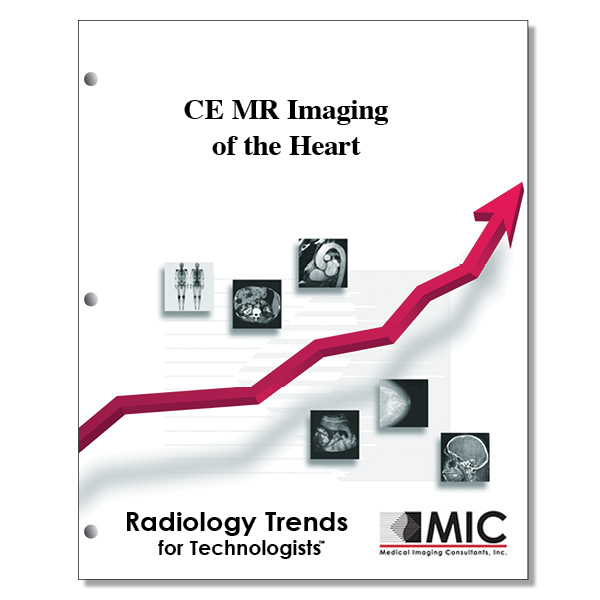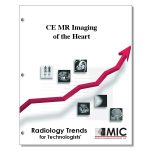

CE MR Imaging of the Heart
Overview of the principles and applications of cardiac MR imaging with an emphasis on the use of contrast media.
Course ID: Q00132 Category: Radiology Trends for Technologists Modalities: Cardiac Interventional, MRI3.0 |
Satisfaction Guarantee |
$34.00
- Targeted CE
- Outline
- Objectives
This course has been approved for 3.0 Category A credits.
No discipline-specific Targeted CE credit is currently offered by this course.
Outline
- Introduction
- General Considerations for Contrast-enhanced Cardiac MR Imaging
- Categories of Contrast Agents for Cardiac MR Imaging
- Role of Contrast Agents for Evaluation of Cardiac Anatomy and Function
- Anatomy
- Ventricular Function
- Myocardial Tagging
- Perfusion MR Imaging
- Microvascular Integrity
- Myocardial Viability
- Cardiomyopathy and Myocarditis
- Cardiac Masses, Thrombi, and Infections
- Pediatric Applications
- Coronary MR Angiography
- Future Developments
- Very High Static Fields
- Interventional MR Imaging of the Heart
- Conclusion
Objectives
Upon completion of this course, students will:
- know the the leading cause of death in the United States
- understand what conditions MRI is the most accurate test for evaluating
- understand what adversely affects T1 contrast in cardiac MRI
- understand what adversely affects EPI sequences in cardiac MRI
- know what is necessary for parallel imaging
- understand the benefits for cardiac MRI derived from parallel imaging
- know how many different classifications of MR contrast agents there are
- understand what extracellular agents are used for in the heart
- be familiar with what blood pool agents contain
- know what type of agent is formed by binding gadolinium chelates to plasma components
- understand the characteristics of gadolinium
- understand the characteristics of iron oxide based agents
- know what pulse sequence cine imaging is best done with
- understand what contrast agents adversely affect cine images
- understand what myocardial tagging is used to evaluate
- be familiar with contrast agent timing considerations for myocardial tagging
- know the name of the non-contrast technique to evaluate myocardial perfusion
- know the most practical technique to evaluate myocardial perfusion
- understand how dynamic first pass imaging is performed
- know what pulse sequences are used for dynamic first pass imaging
- know which pharmaceutical agent is preferred for stress perfusion
- understand what microvascular obstruction is caused by
- understand how myocardial viability can be evaluated
- be familiar with the the strengths and weaknesses of various methods to assess myocardial viability
- know what pulse sequence is used for delayed hyper-enhancement
- know the most accurate exam for determining myocardial viability
- understand what focal contrast enhancement with associated wall motion abnormality is indicative of
- know what fatty infiltration of the myocardium with associated wall motion abnormality is indicative of
- understand for what condition MR evaluation of the pulmonary veins is commonly used
- know what technique can be used to differentiate cardiac tumor from thrombus
- know what the most common cardiac tumor is
- be familiar with the defining characteristics of a myxoma on MRI
- understand what slice thickness should be used to evaluate for cardiac thrombus
- be familiar with alternatives when breath hold imaging is not possible
- understand what technique is used to perform coronary artery imaging with MRI
- know what navigator is used to monitor
- be familiar with the benefits of contrast-enhanced MRA
- understand from what contrast agent 3D navigator MRA may benefit
- know what condition patients with Kawasaki disease are likely to develop
- be familiar with which modality that may eventually be used to guide RF ablation and Stem cell transplant
